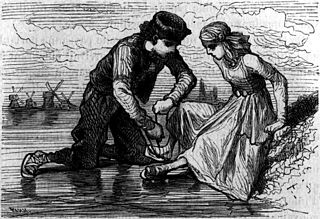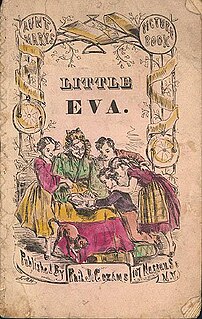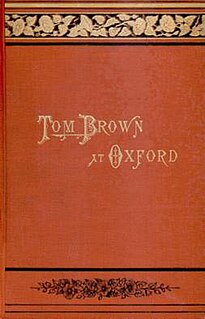 W
WElsie Dinsmore is a children's book series written by Martha Finley (1828–1909) between 1867 and 1905. Of Finley's two girls' fiction series, the Mildred Keith books were more realistic and autobiographical in nature, while the Elsie Dinsmore books, which were better sellers, were more idealistic in plot. A revised and adapted version of the Elsie books was published in 1999.
 W
WThe Gorilla Hunters: A Tale of the Wilds of Africa (1861) is a boys' adventure novel by Scottish author R. M. Ballantyne. A sequel to his hugely successful 1858 novel The Coral Island and set in "darkest Africa", its main characters are the earlier novel's three boys: Ralph, Peterkin and Jack. The book's themes are similar to those of The Coral Island, in which the boys testify to the positive influence of missionary work among the natives. Central in the novel is the hunt for gorillas, an animal until recently unknown to the Western world, which came to play an important role in contemporary debates on evolution and the relation between white Westerners and Africans.
 W
WGypsy Breynton is the heroine of a series of books written by Elizabeth Stuart Phelps. The books were written in 1866–67 for Sunday schools and so are of an improving nature. Gypsy, as the name indicates, is an impetuous tomboy who lives a chaotic life lacking a system. Her development and experiences provide the basis for the restrained moralising of the stories. All that Mrs. Breynton said does not matter here; but Gypsy is not likely soon to forget it. A few words spoken, just as the conversation ended, became golden mottoes that helped her over many rough places in her life. "It is all the old trouble, Gypsy,— you 'didn't think.' A little self-control, a moment's quiet thought, would have saved all this." "Oh, I know it!" sobbed Gypsy. "That's what always ails me. I'm always doing things, and always sorry for them. I mean to do right, and I cannot remember. ... What shall I do with myself, mother?"
 W
WHans Brinker, or The Silver Skates is a novel by American author Mary Mapes Dodge, first published in 1865. The novel takes place in the Netherlands and is a colorful fictional portrait of early 19th-century Dutch life, as well as a tale of youthful honor.
 W
WLittle Eva: The Flower of the South is an Anti-Tom children's book by American writer Philip J. Cozans. Although its publication date is unknown, scholars estimated the release was either in the 1850s or early 1860s. The book follows Little Eva, the daughter of a wealthy Alabama planter. She is characterized through her kindness toward slaves as she reads the Bible to them and teaches the alphabet to slave children. On her ninth birthday, Little Eva nearly drowns, but is rescued by a slave named Sam. Her parents free Sam who decides to remain with the family because he loves them.
 W
WLittle Women is a coming-of-age novel written by American novelist Louisa May Alcott (1832–1888) which was originally published in two volumes in 1868 and 1869. Alcott wrote the book over several months at the request of her publisher. The story follows the lives of the four March sisters—Meg, Jo, Beth, and Amy—and details their passage from childhood to womanhood. It is loosely based on the lives of the author and her three sisters. Scholars classify it as an autobiographical or semi-autobiographical novel.
 W
WMax and Moritz: A Story of Seven Boyish Pranks is a German language illustrated story in verse. This highly inventive, blackly humorous tale, told entirely in rhymed couplets, was written and illustrated by Wilhelm Busch and published in 1865. It is among the early works of Busch, yet it already featured many substantial, effectually aesthetic and formal regularities, procedures and basic patterns of Busch's later works. Many familiar with comic strip history consider it to have been the direct inspiration for the Katzenjammer Kids and Quick & Flupke. The German title satirizes the German custom of giving a subtitle to the name of dramas in the form of "Ein Drama in ... Akten", which became dictum in colloquial usage for any event with an unpleasant or dramatic course, e.g. "Bundespräsidentenwahl - Ein Drama in drei Akten".
 W
WMrs. Overtheway's Remembrances (1869) is the first children's book published by author Juliana Horatia Ewing (1841-1885). The book was published by George Bell & Sons, York Street, Covent Garden, London, and had illustrations by J.A. Pasquier and J. Wolf.
 W
WAn Old-Fashioned Girl is a novel by Louisa May Alcott first published in 1869.
 W
WRagged Dick; or, Street Life in New York with the Boot Blacks is a Bildungsroman by Horatio Alger Jr., which was serialized in Student and Schoolmate in 1867 and expanded for publication as a full-length novel in May 1868 by the publisher A. K. Loring. It was the first volume in the six-volume Ragged Dick Series and became Alger's best-selling work. The tale follows a poor bootblack's rise to middle-class respectability in 19th-century New York City. It had a favorable reception. Student and Schoolmate reported their readers were delighted with the first installment, and Putnam's Magazine thought boys would love the novel. The plot and theme were repeated in Alger's subsequent novels and became the subject of parodies and satires.
 W
WTom Brown at Oxford is a novel by Thomas Hughes, first published in serial form in Macmillan's Magazine in 1859. It was published in two volumes in book form in 1861. It is a sequel to the better-known Tom Brown's School Days.
 W
WThe Water-Babies, A Fairy Tale for a Land Baby is a children's novel by Charles Kingsley. Written in 1862–63 as a serial for Macmillan's Magazine, it was first published in its entirety in 1863. It was written as part satire in support of Charles Darwin's The Origin of Species. The book was extremely popular in England, and was a mainstay of British children's literature for many decades, but eventually fell out of favour in part due to its prejudices against Irish, Jews, Catholics and Americans.